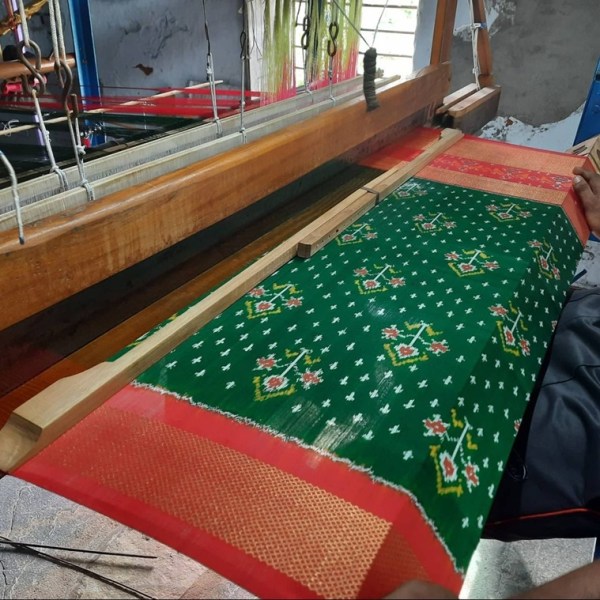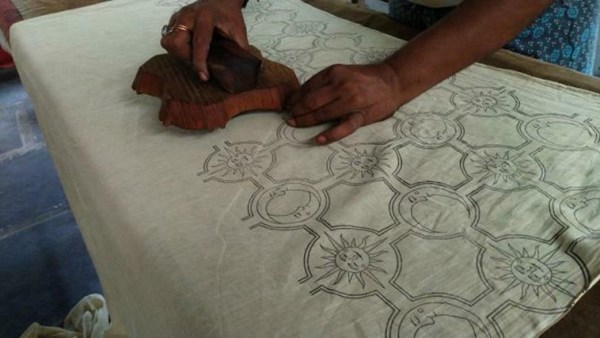- India
- International
Is 7 per cent GST hike in textiles, apparel a contradiction to the promises of ‘Vocal4Handmade’?
“It feels like the right hand doesn’t know what the left hand is doing,” said Laila Tyabji.
 Handloom weaver seen working on an ilkal sari. Express Photo by Jyothy Karat. 06.11.2013. Karnataka.
Handloom weaver seen working on an ilkal sari. Express Photo by Jyothy Karat. 06.11.2013. Karnataka.On December 10, more than 4,000 textile wholesalers, retail shops, producers and merchants dealing with yarn went on a strike in Erode, Chennai. The strike was called for by the Erode Cloth Merchants Association against the Finance Ministry’s decision to increase the GST on various kinds of textiles, footwear and apparels by 7 per cent, spiking the erstwhile 5 per cent GST to 12 per cent, to be effective starting January 1, 2022.
The same notification, issued November 18, had stated a decrease in the rates of synthetic yarns and fibers from 18 per cent to 12 per cent. The revision was justified as a move to bring uniformity in tax rates across the textiles sector and also to eradicate distortions owing to the inverted duty structure.
On National Handloom Day, we salute all those associated with our vibrant handloom and handicrafts sector. They have made commendable efforts to preserve the indigenous crafts of our nation. Let us all be #Vocal4Handmade and strengthen efforts towards an Aatmanirbhar Bharat. pic.twitter.com/XD7cs9ES7F
— Narendra Modi (@narendramodi) August 7, 2020
But, how does the textile industry feel about it?
“It is probably a great initiative for the accountant to make it easy by putting a single tax amount on everything that has to do with the textile, from yarn, fabric, to garment accessories, but for the manufacturer and the consumer, it will be way too difficult,” said Sreejith Jeevan, founder and designer at Kerala-based brand Rouka, expressing concern.
“It will not only become expensive to manage or run production but also make it very difficult to market an already labour-intensive product since the costs would go way up”, he added.
Agreed former president of Erode Cloth Merchants Association, P Ravichandran, who spoke with indianexpress.com from his shut-down offices. In Erode, where the association functions for the welfare of the different local stakeholders of the textile industry, the distressed weavers, small scale mill owners, local retail shop owners, among others, also pulled down their shutters for a day to protest against the hike. “There is a huge rise in the price of the cotton yarn, nearly 30-40 per cent. Adding to that, this government is proposing to increase the GST by 7 per cent. After the pandemic, increase in prices of chemicals for processing, as well as Chinese imports going down, lots of spinning mills went bankrupt in the last two years already,” said Ravichandran, whose association is demanding a restoration of the earlier 5 percent GST rate.

In Telengana, too, craftspeople are left in a disarray at how they will make ends meet with profit margins already low at 2-5 per cent on an average. From the heart of Pochampally, Karnati Narasimha of Vikas Handlooms, which weaves the Pochampally ikat saris that are coveted across the country, worries that the weavers and artisans working under him might abandon the craft. As it is, Narasimha’s loom, like many other small looms from the unorganised sector, is facing minimised sales.
 A Pochampally sari being woven by an artisan at Vikas Handlooms.
A Pochampally sari being woven by an artisan at Vikas Handlooms.
“The prices of colours and zaris will increase, making the production cost higher. We get only a 5 per cent margin from the saris; if we pay the GST at 12 per cent, how can we make any profit?” Narasimha expressed.
Small-scale brands and initiatives who work with craft clusters have also been thrown off by this decision. Hyderabad-based brand Ilamraa, which works with the traditional Kalamkari craft practiced by third generation artisans in Pedana, Andhra Pradesh, was earlier charged a 5 per cent GST by its raw material suppliers, but that is slated to change soon.
“Our fabric unit is now going to charge us 12 per cent which automatically increases the pricing, which we are now yet to figure out how to deal with as sudden increase in product pricing may not be the best option but as a small business, neither is taking a hit on our margins an option”, said its co-founder Yashila Nara. She added that in a sudden change of tax structure like this, the sustainable market space is especially impacted wherein “the intersection of competitive market pricing and affordability is tricky, and this would only make it difficult.
 Hand block printing at Ilamraa’s unit in Andhra Pradesh.
Hand block printing at Ilamraa’s unit in Andhra Pradesh.
“Sustainable products are already on the higher pricing side and to accommodate rising taxes would mean either making changes to production (like shifting from limited pieces to bulk that might cut costs), or letting go off a section of the customer base; the former compromises on sustainability values while the latter does not allow the brand to grow. Both factors are deteriorating in many ways,” she continued.
Industry insiders agree that the move comes across as a contradiction of the social media campaign #Vocal4Handmade by the government, launched on the 6th National Handloom Day (Aug 7, 2020) “in partnership with all stakeholders, to promote the handloom legacy of India and to ensure people’s support for the weaving community”, as per the Ministry of Textiles.
“It feels like the right hand doesn’t know what the left hand is doing,” said Laila Tyabji, a social worker, writer, craft activist, and co-founder of Dastkar, an NGO working to support traditional craftspeople. “It is such a mistake because one huge advantage that India has during times when people all over the world are getting conscious of handmade, natural fibers and eco-friendly processes, is that it already has millions of people who are skilled in these processes. It’s a time when we should be investing in them and target an international market growth for handloom and natural fiber. Instead, we are trying to drive them out of existence,” she said.
Dastkar has been lobbying for the last three years for the complete removal of the GST on textiles as already marginalised handicrafts producers and handloom weavers cannot afford it.
“The GST not only raises the prices of the products but is also a cumbersome mechanism for the neo-literate people to manage, and is another reason why they are leaving the sector because it is becoming so complicated. This further increase is going to be a crushing blow,” added Tyabji.
📣 For more lifestyle news, follow us on Instagram | Twitter | Facebook and don’t miss out on the latest updates!
Apr 27: Latest News
- 01
- 02
- 03
- 04
- 05




































